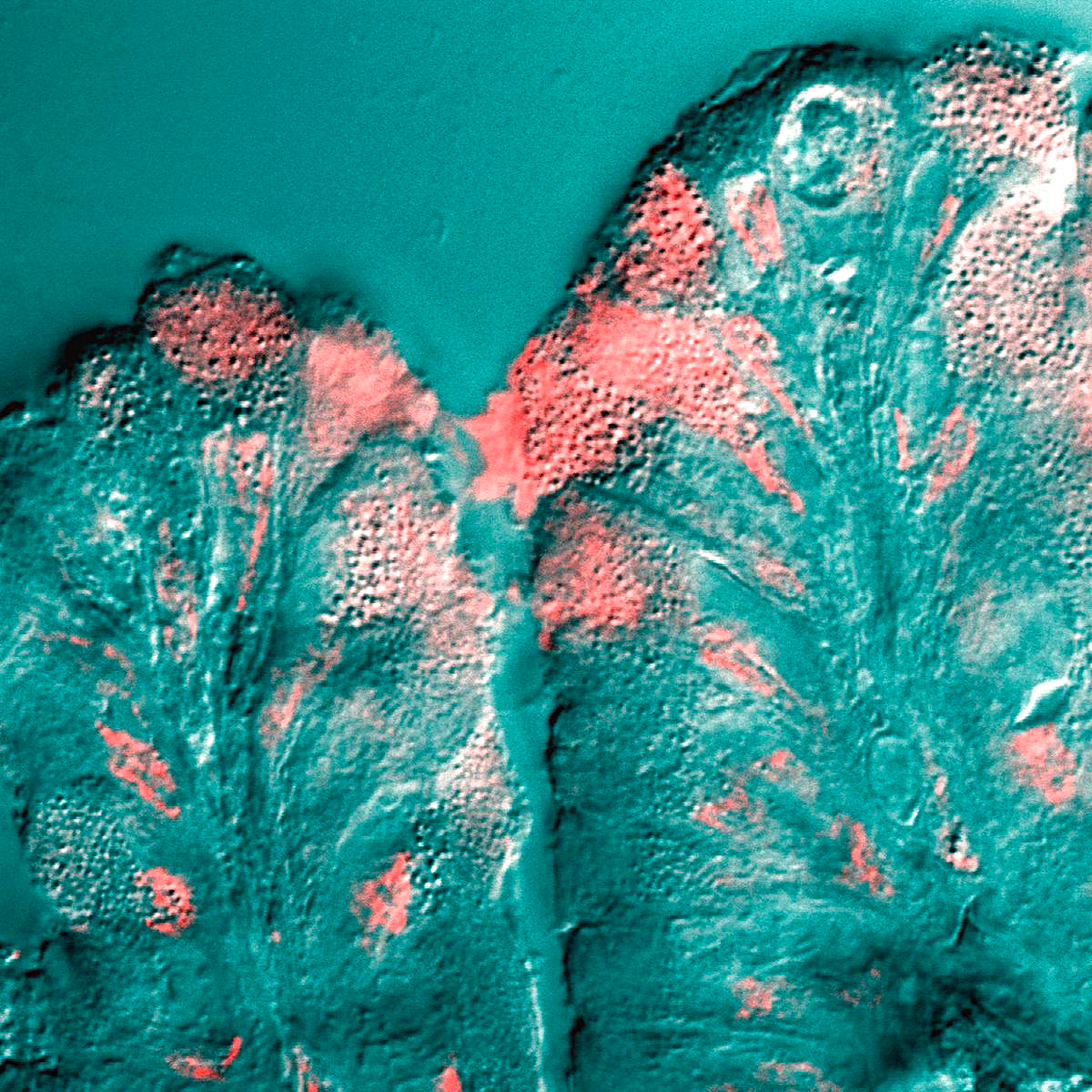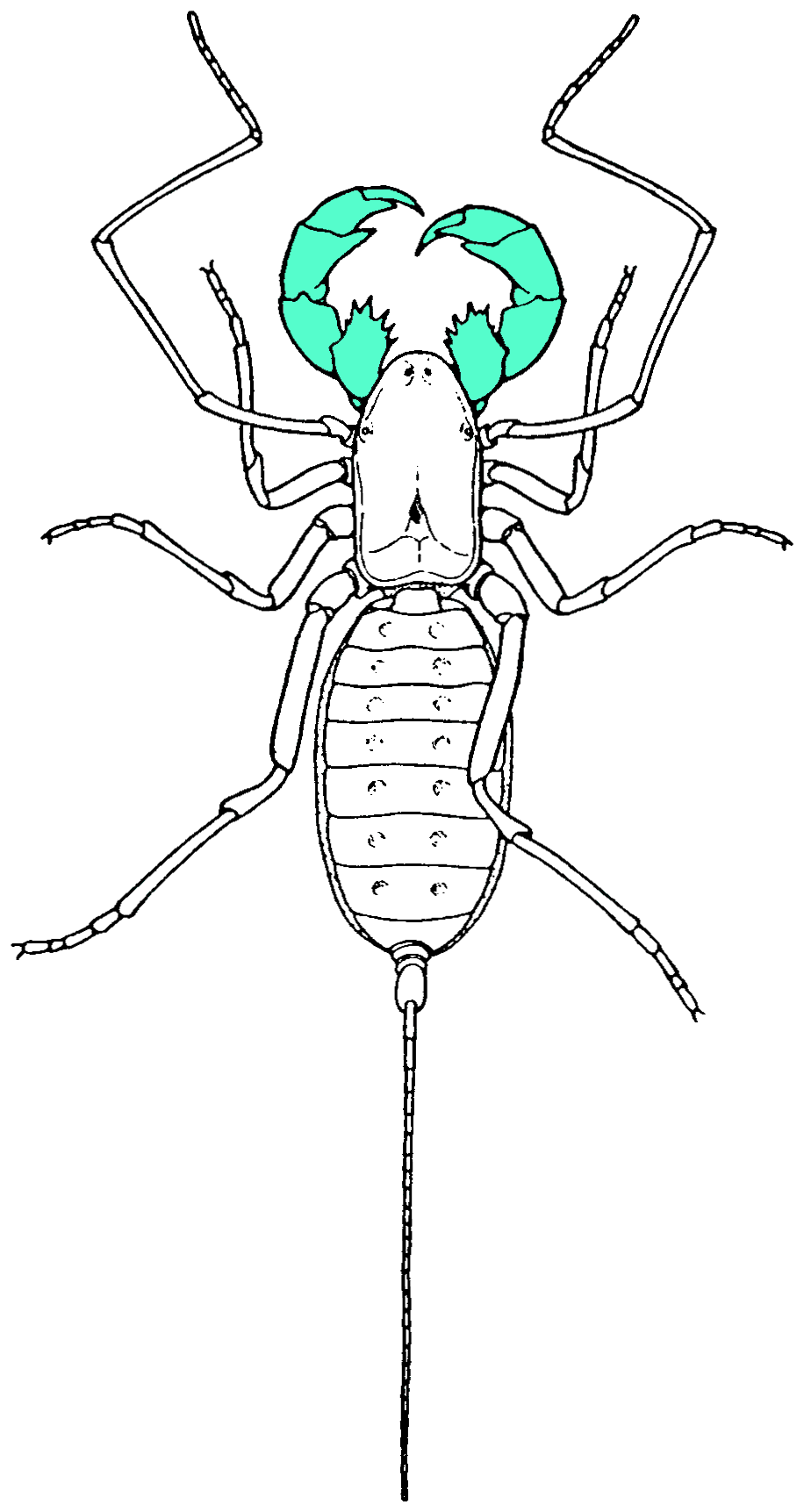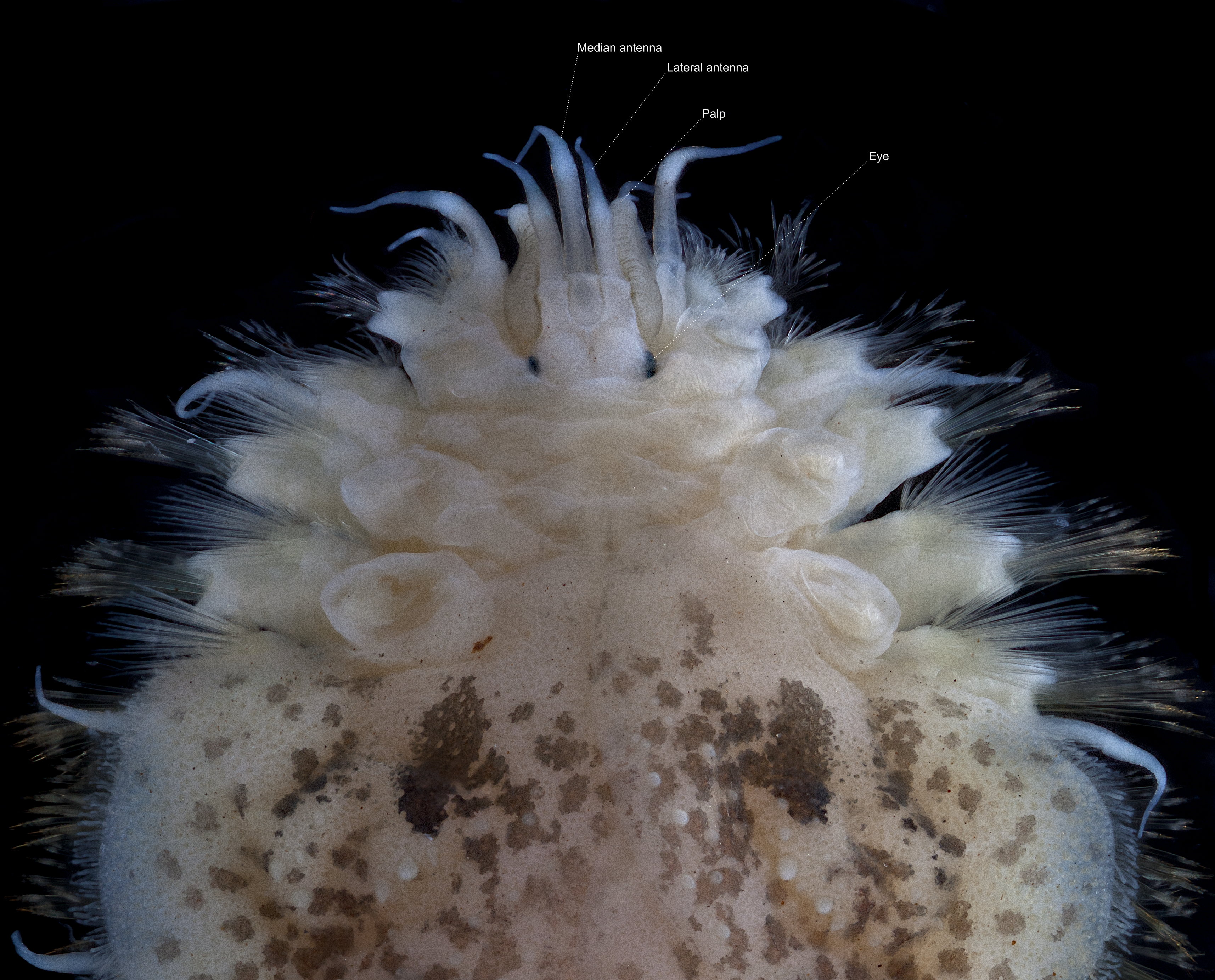|
Eunicida
Eunicida is an order of polychaete worms. Characteristics Members of this order have an elongated, segmented body and a distinct head, normally with a separate peristomium and prostomium. Many, but not all, live in tubes which vary from a mucous sheath to a tough, horny casing. The palps vary from globular to cylindrical and there are from 0 to 7 antennae, usually smooth but occasionally jointed. There is a muscular pharynx with a dorsal pair of mandibles and a set of ventral, toothed, maxillary plates. Some species have tentacular cirri and all have unbranched parapodia. In some species, dorsal cirri, branchiae, ventral cirri and chaetae occur, but not in others. Natural History Museum. Retrieved 2012-01-17. Fossil record The |
Largest Prehistoric Animals
The largest prehistoric animals include both vertebrate and invertebrate species. Many of them are described below, along with their typical range of size (for the general dates of extinction, see the link to each). Many species mentioned might not actually be the largest representative of their clade due to the incompleteness of the fossil record and many of the sizes given are merely estimates since no complete specimen have been found. Their body mass, especially, is largely conjecture because soft tissue was rarely fossilized. Generally, the size of extinct species was subject to energetic and biomechanical constraints. Non-mammalian synapsids (Synapsida) Caseasaurs (Caseasauria) The herbivorous ''Alierasaurus'' was the largest Caseidae, caseid and the largest amniote to have lived at the time, with an estimated length around . ''Cotylorhynchus, Cotylorhynchus hancocki'' is also large, with an estimated length and weight of at least and more than . Edaphosaurids (Ed ... [...More Info...] [...Related Items...] OR: [Wikipedia] [Google] [Baidu] |
Websteroprion
''Websteroprion'' ("Webster's saw") is a genus of eunicidan polychaete that lived during the middle Devonian period in what is now Canada. It contains a single species, ''W. armstrongi'', recovered from the Kwataboahegan Formation. Etymology The genus was named after the bassist Alex Webster of the death metal band Cannibal Corpse. Description ''Websteroprion'' is known from the maxillae of several individuals in one location. These maxillae reaching in length, with one incomplete specimen that supposed to be bigger in full size. These are the largest jaws of any fossil polychaete. A larger fossil jaw had been reported in 1934Eller E. R. Annelid jaws from the Hamilton group of Ontario County, New York. Ann. Carnegie Mus. 24, 51–56 (1934). but that specimen is too undiagnostic so it regarded as a ''nomen dubium''. Referencing the jaw to body size ratio of other polychaetes, ''Websteroprion'' could have grown to long, though the exact size is unknown without soft tissue ... [...More Info...] [...Related Items...] OR: [Wikipedia] [Google] [Baidu] |
Eunice Aphroditois
''Eunice aphroditois'' is a Benthic zone, benthic polychaete, bristle worm of warm marine waters. It lives mainly in the Atlantic Ocean, but can also be found in the Indo-Pacific. It ranges in length from less than to nearly . Its exoskeleton displays a wide range of colors, from black to purple and more. This species is an ambush predator; it hunts by burrowing its whole body in soft sediment on the ocean floor and waiting until its antennae detect prey. It then strikes with its sharp mandibles. It may also be found among coral reefs. ''Eunice aphroditois'' is also known as the bobbit worm or bobbitt worm. The name is believed to be taken from the John and Lorena Bobbitt case. It is sometimes called the sand striker or trap-jaw worm. Traces of their burrows have been found among fossils near Taiwan dating back twenty million years. Description These ambush predators have five antennae on their head that are used to sense prey. The body is covered by a hard exoskeleton. The ma ... [...More Info...] [...Related Items...] OR: [Wikipedia] [Google] [Baidu] |
Mucus
Mucus (, ) is a slippery aqueous secretion produced by, and covering, mucous membranes. It is typically produced from cells found in mucous glands, although it may also originate from mixed glands, which contain both Serous fluid, serous and mucous cells. It is a viscous colloid containing inorganic ions, inorganic salts, antimicrobial enzymes (such as lysozymes), Antibody, immunoglobulins (especially Immunoglobulin A, IgA), and glycoproteins such as lactoferrin and mucins, which are produced by goblet cells in the mucous membranes and submucosal glands. Mucus covers the Epithelium, epithelial cells that interact with outside environment, serves to protect the linings of the respiratory system, respiratory, Digestion#Digestive system, digestive, and Genitourinary system, urogenital systems, and structures in the Visual system, visual and auditory systems from pathogenic Fungus, fungi, bacteria and viruses. Most of the mucus in the body is produced in the gastrointestinal tract. ... [...More Info...] [...Related Items...] OR: [Wikipedia] [Google] [Baidu] |
World Register Of Marine Species
The World Register of Marine Species (WoRMS) is a taxonomic database that aims to provide an authoritative and comprehensive catalogue and list of names of marine organisms. Content The content of the registry is edited and maintained by scientific specialists on each group of organism. These taxonomists control the quality of the information, which is gathered from the primary scientific literature as well as from some external regional and taxon-specific databases. WoRMS maintains valid names of all marine organisms, but also provides information on synonyms and invalid names. It is an ongoing task to maintain the registry, since new species are constantly being discovered and described by scientists; in addition, the nomenclature and taxonomy of existing species is often corrected or changed as new research is constantly being published. Subsets of WoRMS content are made available, and can have separate badging and their own home/launch pages, as "subregisters", such as th ... [...More Info...] [...Related Items...] OR: [Wikipedia] [Google] [Baidu] |
Scolecodont
A scolecodont is the jaw of a polychaete annelid, a common type of fossil-producing segmented worm useful in invertebrate paleontology. Scolecodonts are common and diverse microfossils, which range from the Cambrian period (around half a billion years ago at the start of the Paleozoic era) to the present. They diversified profusely in the Ordovician, and are most common in the Ordovician, Silurian and Devonian marine deposits of the Paleozoic era. Relatedly, more problematic worm-like fossils have been described in even older, Neoproterozoic era deposits in the Ediacaran Hills of southern Australia and in mid-Cambrian deposits of Burgess shale in British Columbia. Since the other classes of annelids (specifically, the earthworms and leeches) lack hard parts, only the sea-dwelling polychaetes are frequently represented in the fossil record. Polychaetes are commonly fossilized due to their chitinous teeth and their dwelling tubes made of durable calcite (a calcium carbonate), ha ... [...More Info...] [...Related Items...] OR: [Wikipedia] [Google] [Baidu] |
Devonian
The Devonian ( ) is a period (geology), geologic period and system (stratigraphy), system of the Paleozoic era (geology), era during the Phanerozoic eon (geology), eon, spanning 60.3 million years from the end of the preceding Silurian period at million years ago (Megaannum, Ma), to the beginning of the succeeding Carboniferous period at Ma. It is the fourth period of both the Paleozoic and the Phanerozoic. It is named after Devon, South West England, where rocks from this period were first studied. The first significant evolutionary radiation of history of life#Colonization of land, life on land occurred during the Devonian, as free-spore, sporing land plants (pteridophytes) began to spread across dry land, forming extensive coal forests which covered the continents. By the middle of the Devonian, several groups of vascular plants had evolved leaf, leaves and true roots, and by the end of the period the first seed-bearing plants (Pteridospermatophyta, pteridospermatophyt ... [...More Info...] [...Related Items...] OR: [Wikipedia] [Google] [Baidu] |
Parapodium
In invertebrates, the term parapodium ( Gr. ''para'', beyond or beside + ''podia'', feet; : parapodia) refers to lateral outgrowths or protrusions from the body. Parapodia are predominantly found in annelids, where they are paired, unjointed lateral outgrowths that bear the chaetae. In several groups of sea snails and sea slugs, 'parapodium' refers to lateral fleshy protrusions. __TOC__ Annelid parapodia Most species of polychaete annelids have paired, fleshy parapodia which are segmentally arranged along the body axis. Parapodia vary greatly in size and form, reflecting a variety of functions, such as, anchorage, protection and locomotion. General description Parapodia in polychaetes can be uniramous (consisting of one lobe or ramus) but are usually biramous (two lobes or rami). In the latter case, the dorsal lobes are called notopodia and the ventral lobes neuropodia. Both neuropodia and notopodia may possess a bundle of chaetae (neurochaetae and notochaetae respectively ... [...More Info...] [...Related Items...] OR: [Wikipedia] [Google] [Baidu] |
Mandible
In jawed vertebrates, the mandible (from the Latin ''mandibula'', 'for chewing'), lower jaw, or jawbone is a bone that makes up the lowerand typically more mobilecomponent of the mouth (the upper jaw being known as the maxilla). The jawbone is the skull's only movable, posable bone, sharing Temporomandibular joint, joints with the cranium's temporal bones. The mandible hosts the lower Human tooth, teeth (their depth delineated by the alveolar process). Many muscles attach to the bone, which also hosts nerves (some connecting to the teeth) and blood vessels. Amongst other functions, the jawbone is essential for chewing food. Owing to the Neolithic Revolution, Neolithic advent of agriculture (), human jaws evolved to be Human jaw shrinkage, smaller. Although it is the strongest bone of the facial skeleton, the mandible tends to deform in old age; it is also subject to Mandibular fracture, fracturing. Surgery allows for the removal of jawbone fragments (or its entirety) as well a ... [...More Info...] [...Related Items...] OR: [Wikipedia] [Google] [Baidu] |
Pharynx
The pharynx (: pharynges) is the part of the throat behind the human mouth, mouth and nasal cavity, and above the esophagus and trachea (the tubes going down to the stomach and the lungs respectively). It is found in vertebrates and invertebrates, though its structure varies across species. The pharynx carries food to the esophagus and air to the larynx. The flap of cartilage called the epiglottis stops food from entering the larynx. In humans, the pharynx is part of the Digestion, digestive system and the conducting zone of the respiratory system. (The conducting zone—which also includes the nostrils of the Human nose, nose, the larynx, trachea, bronchus, bronchi, and bronchioles—filters, warms, and moistens air and conducts it into the lungs). The human pharynx is conventionally divided into three sections: the nasopharynx, oropharynx, and laryngopharynx (hypopharynx). In humans, two sets of pharyngeal muscles form the pharynx and determine the shape of its lumen (anatomy), ... [...More Info...] [...Related Items...] OR: [Wikipedia] [Google] [Baidu] |
Palps
Pedipalps (commonly shortened to palps or palpi) are the secondary pair of forward appendages among chelicerates – a group of arthropods including spiders, scorpions, horseshoe crabs, and sea spiders. The pedipalps are lateral to the chelicerae ("jaws") and anterior to the first pair of walking legs. Overview Pedipalps are composed of six segments or articles. From the proximal end (where they are attached to the body) to the distal, they are: the coxa, the trochanter, the femur, the short patella, the tibia, and the tarsus. In spiders, the coxae frequently have extensions called maxillae or gnathobases, which function as mouth parts with or without some contribution from the coxae of the anterior legs. The limbs themselves may be simple tactile organs outwardly resembling the legs, as in spiders, or chelate weapons (pincers) of great size, as in scorpions. The pedipalps of Solifugae are covered in setae, but have not been studied in detail. Comparative studies of pedipalpa ... [...More Info...] [...Related Items...] OR: [Wikipedia] [Google] [Baidu] |
Prostomium
The prostomium (From Ancient Greek, meaning "before the mouth"; : prostomia; sometimes also called the "acron") is the Cephalization, cephalized first body segment in an annelid worm's body at the anterior end. It is in front of (but does not include) the mouth, being usually a small shelf- or lip-like extension over the dorsal side of the mouth. The prostomium together with the peristomium, which includes the mouth and pharynx#Invertebrates, pharynx, make up the annelid head. Description The prostomium is part of the head and holds at least part of the brain and often bears sensory structures such as the simple eye in invertebrates, eyes, antenna (biology), antennae and palps. It may function like a kind of overlip when the animal is feeding. The prostomium bears many important taxonomic characters and its shape and composition are important for annelid systematics. In addition to the eyes, antennae and palps, the prostomium can possess appendages such as tentacles or cirrus ... [...More Info...] [...Related Items...] OR: [Wikipedia] [Google] [Baidu] |






